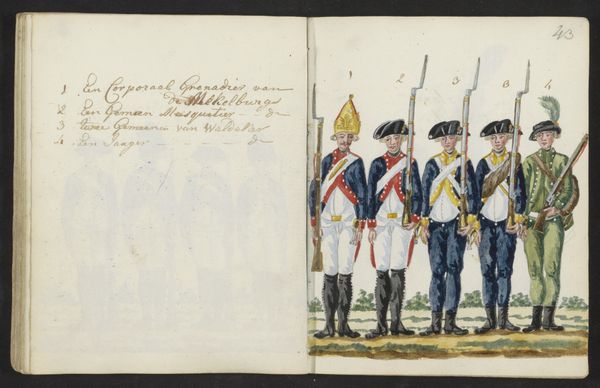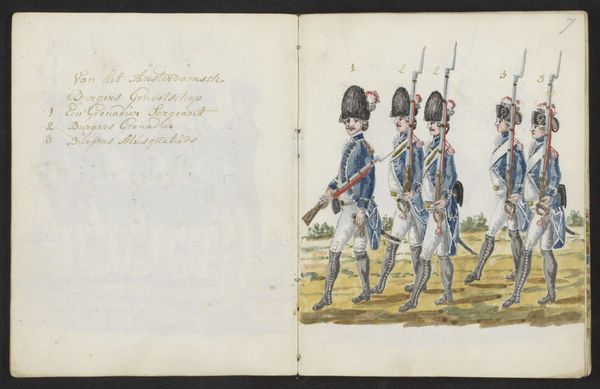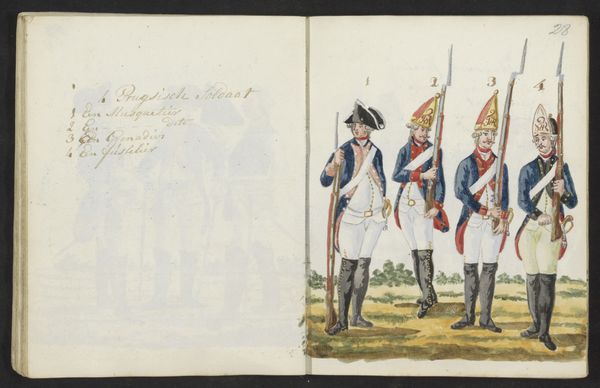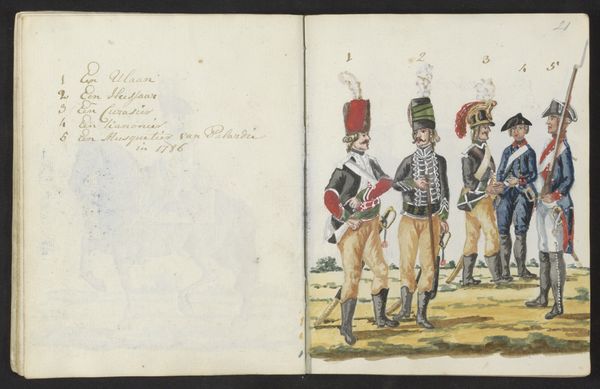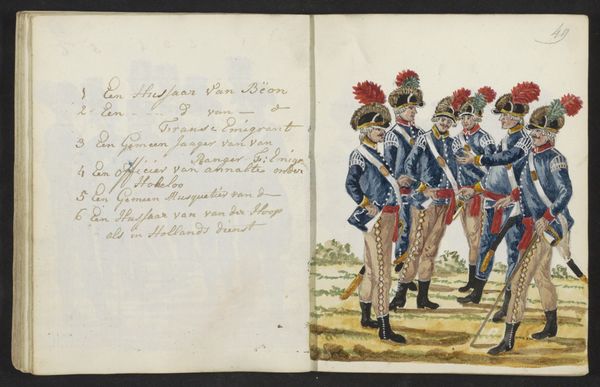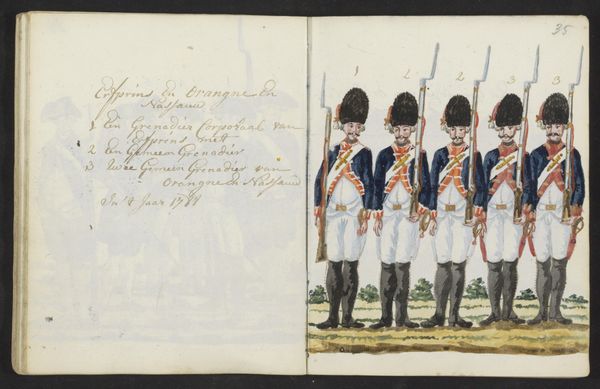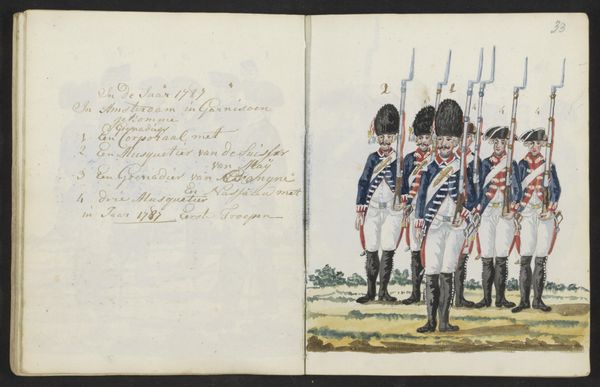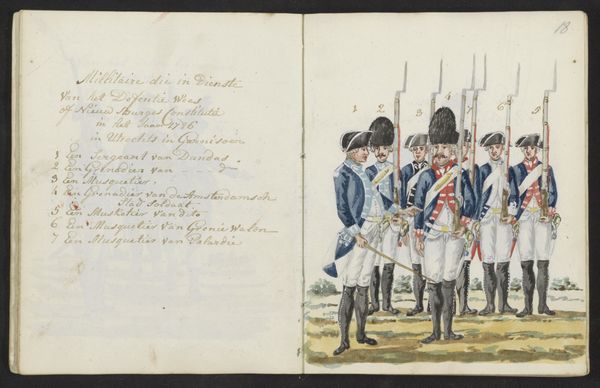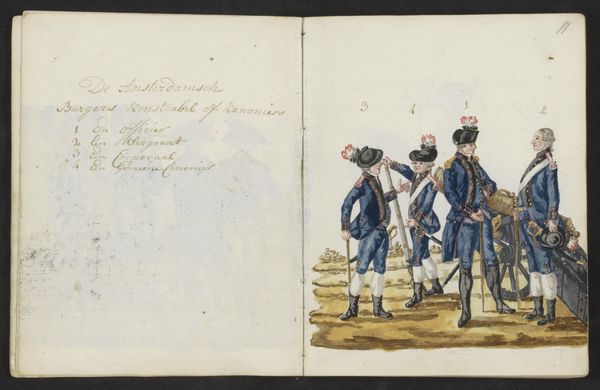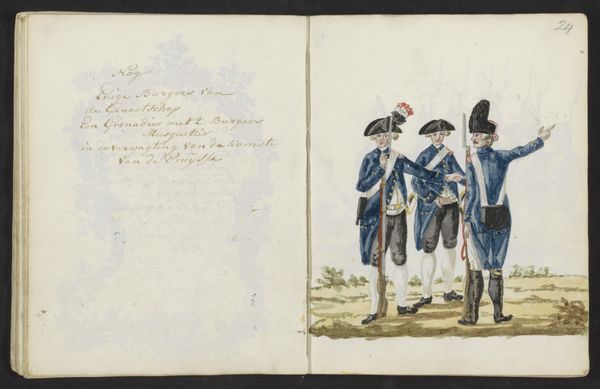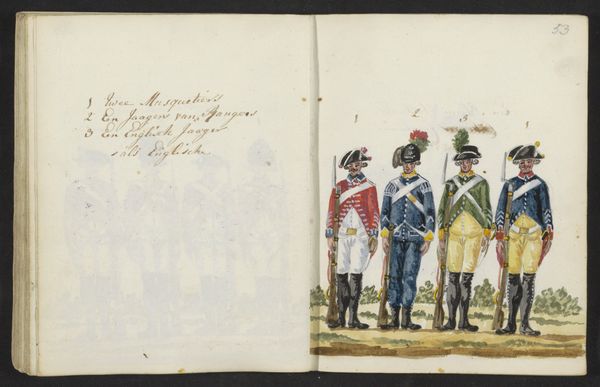
drawing, coloured-pencil, watercolor
#
drawing
#
neoclacissism
#
coloured-pencil
#
figuration
#
watercolor
#
coloured pencil
#
watercolour illustration
#
history-painting
Dimensions: height 197 mm, width 310 mm
Copyright: Rijks Museum: Open Domain
Curator: We’re looking at "Uniforms of the Prussian Marwitz Regiment in 1787," a drawing done between 1795 and 1796 by S.G. Casten. It’s primarily executed with watercolor and colored pencil. What are your initial thoughts? Editor: Well, my first impression is of the almost startling rigidity. The line of soldiers seems incredibly stiff and uniform. I immediately think of the social pressures that generate such... sameness. Curator: Absolutely. It reflects the period's embrace of Neoclassicism and the ideals of order and control. The detailed rendering of the uniforms speaks to the socio-political importance placed on military appearance and the representation of power. Editor: Yes, it is fascinating to consider the materials employed too. Watercolor gives the uniforms a crisp, precise look and using colored pencils allowed the artist to render very minute details – down to buttons and braids! Such a visual emphasis really draws attention to how the artist made this work and highlights all those material goods provided by a state. Curator: And consider the role these images played. Documents like these circulated within military and aristocratic circles. It’s more than a portrait; it’s a demonstration of Prussian military prowess to themselves and other nations, really influencing the very social fabric. Editor: I'm also wondering about the artist themselves: was Casten commissioned? What were the precise material circumstances of production for pieces like this? It feels so different to consider who made this in terms of the physical and societal process. Curator: A valid point. These are key questions to explore further. Whether commissioned or created independently, it serves as a visual record influenced by the aesthetic tastes and political climate of the era. Editor: Looking closer, that stark, unadorned background and those lines...it brings to mind the very controlled, maybe even constrained, environment these soldiers inhabited, materially speaking. It reveals the larger social system, I think. Curator: Exactly. The drawing offers a valuable glimpse into not just the material culture but also the ideals and power dynamics of 18th-century Prussia, showing art's vital public role. Editor: Examining the materials of both the soldiers’ uniforms and artistic production, that's been really clarifying in picturing this piece’s broader socio-economic function and significance for me. Thanks. Curator: Agreed. Considering its context enhances our understanding of this artwork's importance, far beyond a mere military record.
Comments
No comments
Be the first to comment and join the conversation on the ultimate creative platform.
